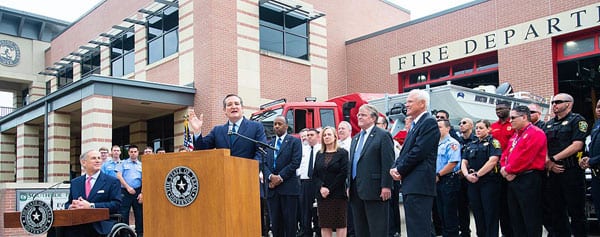
March 5, 2019; National Public Radio, “All Things Considered”
Last summer, NPQ covered a study by Junia Howell of the University of Pittsburgh and James (Jim) Elliott of Rice University in Houston that, based on their analysis of data from 1999 through 2013, found that “Whites gained an average $126,000 in wealth per household following recovery efforts. Yet wealth among Blacks, Latinxs, and Asians decreased by $10,000–$29,000.” Now, a National Public Radio (NPR) analysis of 40,000 buyouts by the Federal Emergency Management Agency (FEMA) between 1989 and 2017 shows one mechanism that enables these results to occur.
As Rebecca Hersher at NPR explains:
An NPR investigation has found that across the country, white Americans and those with more wealth often receive more federal dollars after a disaster than do [people of color] and those with less wealth. Federal aid isn’t necessarily allocated to those who need it most; it’s allocated according to cost-benefit calculations meant to minimize taxpayer risk. Put another way, after a disaster, rich people get richer and poor people get poorer. And federal disaster spending appears to exacerbate that wealth inequality.
Hersher illustrates the dynamics through a comparison of the Papadopoulos and Evans families. Both families had to evacuate when Hurricane Harvey hit Houston. But there the similarities ended. As Hersher explains,
From the beginning, a lot of things went right for the Papadopoulos family. John’s employer, Microsoft, gave him as much time off as he needed and more than $10,000 to help with rent and other bills that piled up after the flood.… The Federal Emergency Management Agency (FEMA) gave them $30,000; because the family owned a home that had been destroyed in the flood, the Internal Revenue Service sent checks for more than $100,000 in refunded taxes—a perk of having a relatively high income. The Small Business Administration gave the family a low-interest loan. About a year after the storm, Papadopoulos said, his family was financially stable.
Sign up for our free newsletters
Subscribe to NPQ's newsletters to have our top stories delivered directly to your inbox.
By signing up, you agree to our privacy policy and terms of use, and to receive messages from NPQ and our partners.
The story of Janice Perry-Evans was very different. FEMA gave her $2,500, which allowed her to buy a car to meet her transportation needs. Perry-Evans and her family rented and thus were ineligible for the $30,000 grant that the Papadopoulos family got. And her employer, the US Post Office, didn’t provide the same $10,000 grant that Microsoft gave the Papadopoulos family. Efforts to get housing assistance or a low-interest business loans were both denied. “It was like every time I tried something, it was an obstacle in the way,” she tells Hersher.
Kathy Payton, who directs the Fifth Ward Community Redevelopment Corp., a nonprofit that works miles from where Perry-Evans lives, says what Perry-Evans experienced is not unusual. She also points out that wealthier families also can comply with rigid application requirements more easily. “You’ve got to make adjustments based on the vulnerabilities and the needs of the families. And that’s not what we do.”
Hersher adds, “A new and growing body of research backs up Payton’s observations. Studies by sociologists, as well as climate scientists, urban planners and economists, suggest that disasters, and the federal aid that follows, disproportionately benefit wealthier Americans. The same is also true along racial lines, with white communities benefiting disproportionately.”
To see how this works, notes Hersher, NPR examined 40,000 property buyouts funded by FEMA, state, and local governments, and found most were in neighborhoods that were more than 85 percent white. In contrast, the nation overall is 62-percent white. Buyouts have a similar dynamic. “The buyouts,” Hersher notes, “are voluntary, and the homeowner can use the money to move to a safer place.”
As climate change drives more extreme rain, David Maurstad of FEMA says he expects the buyout program to grow more in the coming years. Fixing the disparities is imperative because, as Hersher writes, “Disasters are now more common. At mid-century, fewer than 20 percent of counties experienced a disaster a year. Today, it’s closer to 50 percent.”
Hersher concludes, “The bigger picture around the country is that some Americans will be more vulnerable and some will be more resilient in the face of climate change. And who wins and who loses appears to mirror existing inequalities.”—Steve Dubb













